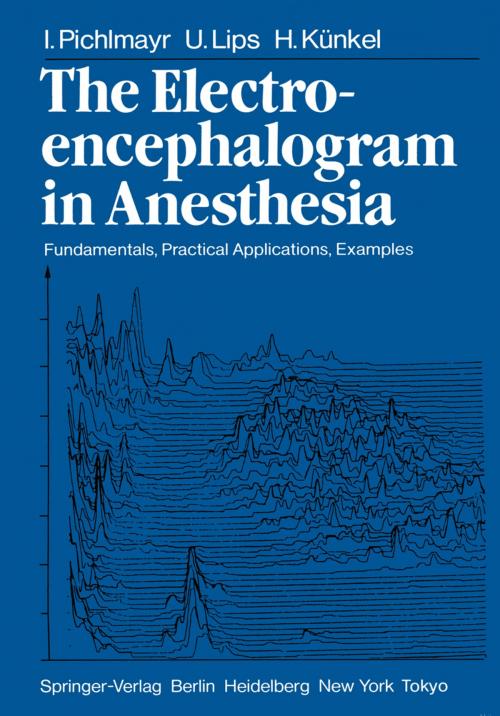The Electroencephalogram in Anesthesia
Fundamentals, Practical Applications, Examples
Nonfiction, Health & Well Being, Medical, Specialties, Anesthesiology, Internal Medicine, Neuroscience| Author: | I. Pichlmayr, U. Lips, H. Künkel | ISBN: | 9783642695629 |
| Publisher: | Springer Berlin Heidelberg | Publication: | December 6, 2012 |
| Imprint: | Springer | Language: | English |
| Author: | I. Pichlmayr, U. Lips, H. Künkel |
| ISBN: | 9783642695629 |
| Publisher: | Springer Berlin Heidelberg |
| Publication: | December 6, 2012 |
| Imprint: | Springer |
| Language: | English |
Neurological, neurovegetative, and psychic changes following surgery or in tensive care indicate alterations in cerebral function. When these changes are analyzed exactly, they are found to be by no means rare; at the same time, they present a wide spectrum of clinical manifestations. While optimal circulatory monitoring - including continuous EEG recording during anes thesia or intensive care - is today regarded as routine, the problem of objec tive and continuous monitoring of cerebral function under various forms of anesthesia, surgery, and intensive care has not been solved. Considerable improvements in clinical neurophysiology, mainly through visual and spectral analytic evaluations of the EEG, show func tional neurophysiological changes to be equivalent to, or the cause of, clinical, neurological, and psychic changes. The question of current interest, therefore, is whether anesthesiological EEG monitoring is able, both theo retically and practically, to detect and adequately interpret cerebral altera tions following perioperative measures such that these alterations can be treated or avoided accordingly. In the long run, the basic questions are to what extent can anesthesiological measures be guided by the EEG pattern and managed effectively, and can EEG analysis be significant both for the individual patient and in the general interpretation of the effect of anes thesiological procedures? Questions of the relevance and practicability of anesthesiological EEG monitoring are dealt with in this book. This study is based on an analysis of more than 1500 EEGs of patients who underwent anesthesia during surgery.
Neurological, neurovegetative, and psychic changes following surgery or in tensive care indicate alterations in cerebral function. When these changes are analyzed exactly, they are found to be by no means rare; at the same time, they present a wide spectrum of clinical manifestations. While optimal circulatory monitoring - including continuous EEG recording during anes thesia or intensive care - is today regarded as routine, the problem of objec tive and continuous monitoring of cerebral function under various forms of anesthesia, surgery, and intensive care has not been solved. Considerable improvements in clinical neurophysiology, mainly through visual and spectral analytic evaluations of the EEG, show func tional neurophysiological changes to be equivalent to, or the cause of, clinical, neurological, and psychic changes. The question of current interest, therefore, is whether anesthesiological EEG monitoring is able, both theo retically and practically, to detect and adequately interpret cerebral altera tions following perioperative measures such that these alterations can be treated or avoided accordingly. In the long run, the basic questions are to what extent can anesthesiological measures be guided by the EEG pattern and managed effectively, and can EEG analysis be significant both for the individual patient and in the general interpretation of the effect of anes thesiological procedures? Questions of the relevance and practicability of anesthesiological EEG monitoring are dealt with in this book. This study is based on an analysis of more than 1500 EEGs of patients who underwent anesthesia during surgery.















